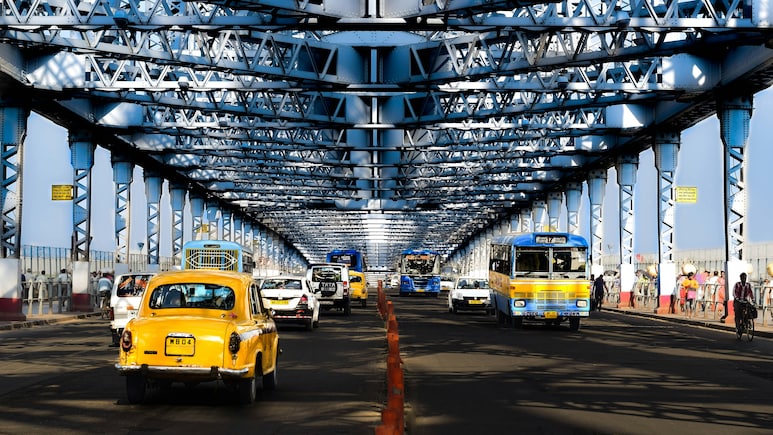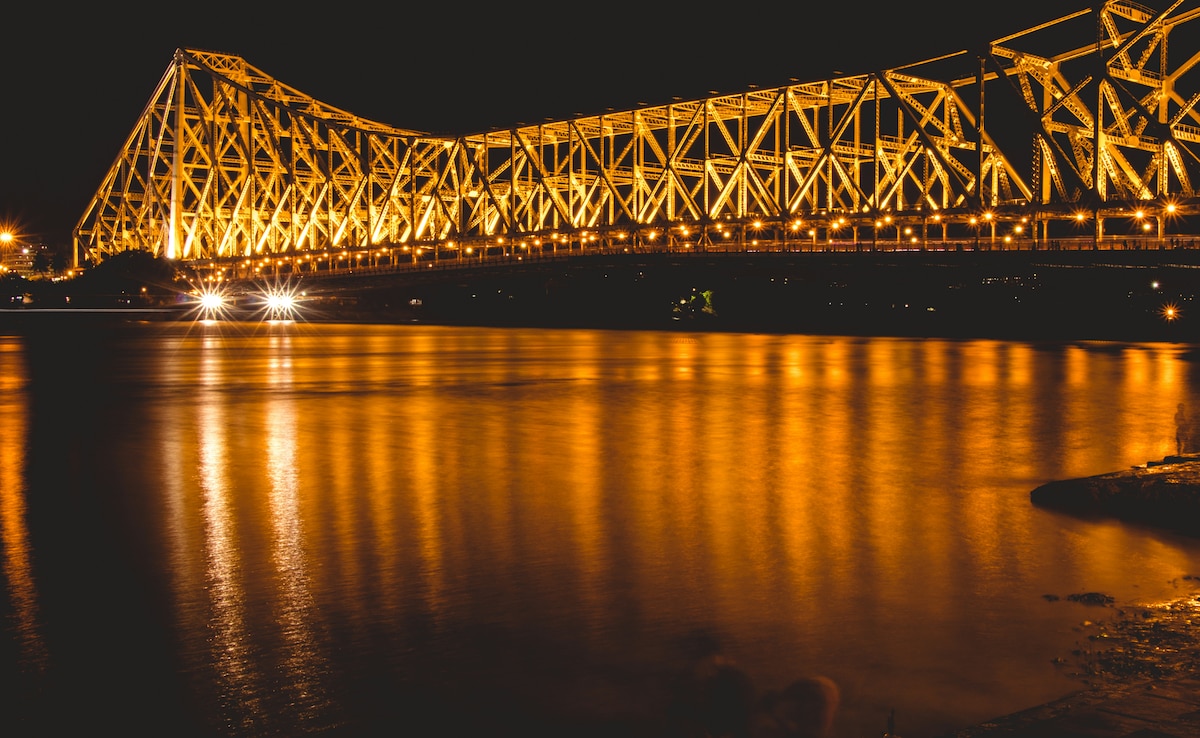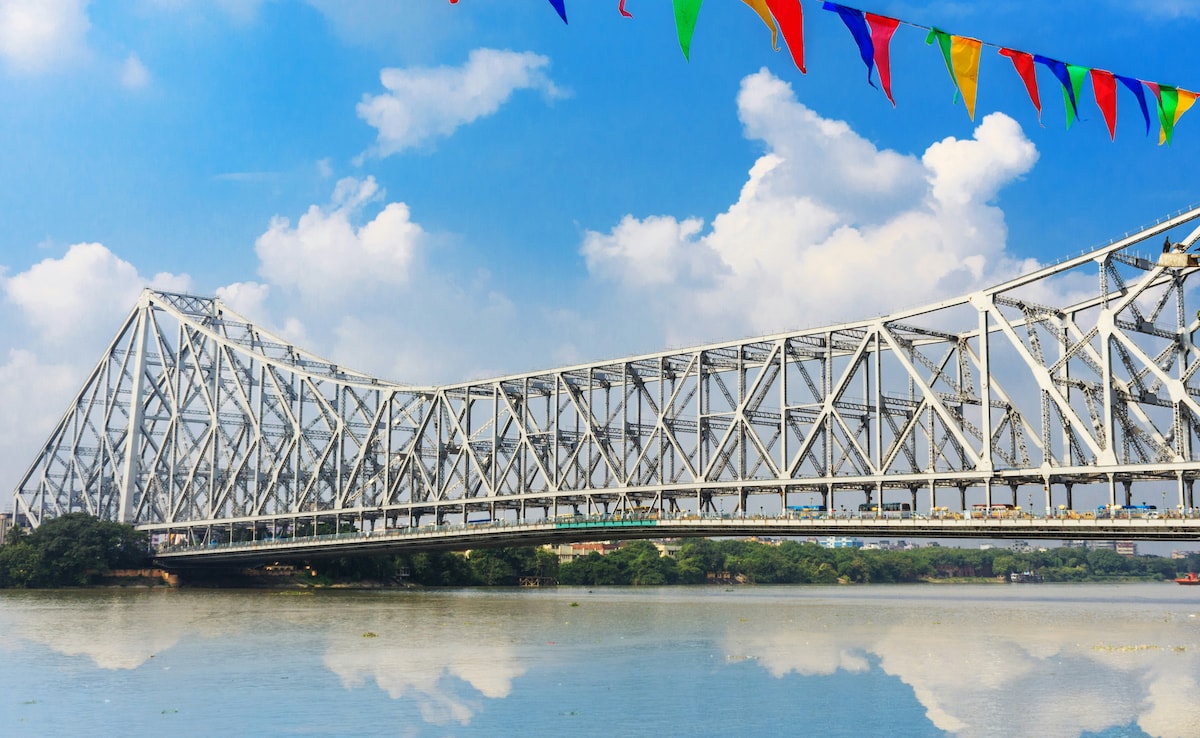
- Howrah Bridge was built entirely with rivets, using no nuts or bolts
- Construction started in 1936 and the bridge opened in 1943 during WWII
- It was camouflaged in WWII to protect it from Japanese air raids
If you have ever been to Kolkata, chances are you have crossed, or at least admired, the iconic Howrah Bridge. Stretching across the Hooghly River, this massive steel structure is more than just a bridge. It is a lifeline, a landmark, and a living symbol of the city's spirit. For locals, it connects two bustling worlds - Howrah and Kolkata - carrying thousands of cars, buses, and pedestrians every single day. For travellers, it is a moment of awe: a steel giant that captures the essence of Bengal's capital in one sweeping glance.
But beneath its daily hustle lies a story of engineering brilliance, wartime resilience, and cultural pride. Here are six incredible facts about Howrah Bridge that reveal why it is so much more than a crossing over water.
Also Read: 7 Easy Weekend Getaways From Kolkata Perfect For Your Next Road Trip

Photo Credit: Unsplash
6 Incredible Facts You Should Know Before Visiting:
1. No Nuts And Bolts Used:
One of the most jaw-dropping facts? The Howrah Bridge was built without a single nut or bolt. Instead, it was entirely riveted together, a technique that made it stronger and more durable. This was cutting-edge engineering in the 1940s, and it still holds up today, despite decades of heavy traffic and unpredictable weather.
2. A Dream That Took Decades:
The idea of building a bridge over the Hooghly River was first proposed in 1906, but construction only began in 1936. It finally opened to the public in 1943, right in the middle of World War II. By then, it was hailed as an architectural marvel. And even today, it continues to impress engineers and travellers alike.
3. Camouflaged During World War II:
During World War II, the bridge was camouflaged to protect it from Japanese air raids. Despite global turmoil, construction carried on, and the bridge was completed without delay. Its survival during wartime is a testament to its strategic importance and the determination behind its creation.
4. One Of The Busiest Bridges In The World:
Howrah Bridge is not just historic; it is incredibly active. Every day, it carries over 100,000 vehicles and nearly 150,000 pedestrians, making it one of the busiest cantilever bridges in the world. What is even more remarkable? It does all this without any supporting pylons in the river, allowing ships and ferries to pass freely beneath.
5. Built With Indian Steel:
The bridge was constructed using around 26,500 tons of steel, most of it supplied by Tata Steel in Jamshedpur. At a time when India was still under British rule, this was a proud moment for Indian industry. Today, the bridge still stands tall as a symbol of homegrown engineering excellence.
6. Its Official Name Is Rabindra Setu:
Though everyone still calls it Howrah Bridge, its official name is Rabindra Setu, renamed in 1965 to honour poet and Nobel laureate Rabindranath Tagore. The name change reflects Kolkata's deep love for its cultural icons. But the original name remains etched in everyday language, proof of how deeply it is woven into the city's identity.

Photo Credit: Unsplash
Here Are Some Of The Frequently Asked Questions (FAQs) About Howrah Bridge:
Q. Why Is Howrah Bridge So Special?
It is special for its unique engineering, massive daily traffic, and its role as a cultural symbol of Kolkata. Built without nuts and bolts, it is both a technical marvel and a local icon.
Q. What Is the Real Name of Howrah Bridge?
The official name is Rabindra Setu, renamed in 1965 to honour Rabindranath Tagore. However, "Howrah Bridge" remains the name most people use.
Q. How Many Years Did It Take to Build?
Actual construction took seven years (1936-1943), but the idea had been in discussion since 1906, making it a project decades in the making.
Q. Can You Walk Across Howrah Bridge?
Yes, pedestrians can walk across the bridge. It is a daily route for thousands and offers stunning views of the Hooghly River, especially at sunrise or sunset.
Also Read: One City, Five Experiences: 5 Most Unique Things To Do In Kolkata
The Bottom Line:
Whether seen in the early morning haze or lit up against the evening sky, the Howrah Bridge fills visitors with a sense of awe and respect. It is not just steel and rivets; it is a symbol of Kolkata's strength, history, and character. So, the next time you cross it, pause for a moment. Look around a nd let the bridge tell you its story.
Track Latest News Live on NDTV.com and get news updates from India and around the world

